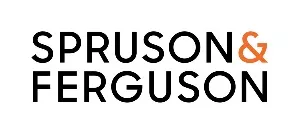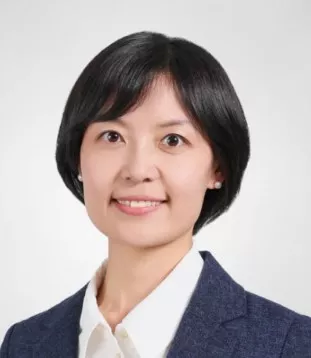- with readers working within the Retail & Leisure industries
- within Privacy and Corporate/Commercial Law topic(s)
- with Senior Company Executives, HR and Finance and Tax Executives
- in Europe
CNIPA has released a draft of amendments to the Guidelines of Patent Examination, with proposed changes open to public comments on 30 April 2025, 15 months after the current Guidelines came in force.
The proposed amendments cover various aspects of the Guidelines, including procedure matters, dual filing approach, petitioner of invalidation request, plant variety, inventiveness evaluation and PTA scenarios. It also focuses on Bitstream/AI related inventions.
We summarise the proposed changes below, and discuss what this means for patent holders and applicants.
Identification information of inventors and patent agency responsibilities
- The identity information of all inventors is required to be completed in the request form at the time of filing an application, including name, nationality, and ID card numberif they are a Chinese national.
- The patent agency shall be responsible for the authenticity and validity of the identity information of applicant and inventors, as well as the completed contact information.
Dual filing approach
If an applicant files an invention patent and a parallel utility model patent on the same day with a reference to each other, when the invention patent application is due to be granted, the applicant may choose to abandon the utility model patent to pursue the invention patent and avoid double patenting, otherwise the invention patent application will be rejected.
This change would remove the option, where amendments to the claims of the invention application in order to differ the scope covered by the corresponding Utility Model patent in dual filing strategy would be no longer allowed.
It should be noted that if an invention patent, via a dual filing strategy, is granted and the corresponding utility model is abandoned, the invention patent would be not eligible for PTA under the current practice.
Excess pages fees
Excess pages fees are no longer payable for ST. 26 sequence listing filed in .XML format. This would reduce the official fees for excess pages for biology applications with a Sequence listing, which, for some cases, will significantly ease the burden of cost for the applicants.
Eligibility as petitioner for invalidation
If the request for invalidation was not based on the true intention expressed by the petitioner, the request for invalidation would not be accepted.
This amendment appears to further emphasise the stipulations around honesty and credibility in the 4th Chinese Patent Law and Implementation Rules. A direct impact could be on the "straw man" option during invalidation procedure. Nonetheless, it is yet to be clear about the standards of a "true intention".
Refund of fees
For the following circumstances, the CNIPA will no longer automatically process refunds, but the parties concerned can initiate a request for refund:
- The examination fee is refunded in full if the Chinese patent application is withdrawn, or deemed to be withdrawn before the Notification of Entering Substantive Examination Procedure is issued.
- The annuities paid after the patent right has been terminated or the decision on declaring the patent right entirely invalid has been announced.
- The restoration fee and relevant fee if the CNIPA decides to refuse the restoration request.
Expedited review
Chinese patent applications that have passed the pre-examination by local intellectual property protection centers or fast IPR service centers may be eligible for expedited review by the CNIPA.
Pre-examination of patents is a service offered by local intellectual property protection centers for patent applications that request an expedited review before formal submission to the CNIPA.
Applicants must be enterprises or institutions that meet the relevant industry and regional requirements, and must register in advance with the local intellectual property protection center. The applications must fall within the technical fields that the local intellectual property protection centers accept for pre-examination.
Details of applicant and inventors at the time of filing recorded on Patent Certificate
For national phase applications and divisional applications, the names of the applicants and inventors/designers at the time of filing recorded on the patent certificate should be the names that were provided at the time of entering into the national phase applications or filing divisional applications.
Reasonable delay caused during re-examination proceedings
Reasonable delays during re-examination proceedings include the situation where the decision of final rejection is withdrawn because of with amendments to the application documents or filing of new arguments and/or new evidence materials during the re-examination proceedings.
Calculation of the compensation period shall further exclude the time during re-examination if the Rejection Decision is withdrawn based on new arguments, new evidence(s) and/or amendments to the application documents during the re-examination. While the latter two can be easily determined, it may need further illustration on criteria of new arguments - what if the applicants hold the same viewpoint which is further explained in other words?
Plants and plant variety
- The definition of unpatentable "Plant variety" is changed to a plant population possessing distinctness, uniformity and stability, which means such plant population is distinct from other plant populations and maintains consistent morphological and biological characteristics and stable genetic traits after reproduction.
- The plants which belong to scientific discoveries are clarified. Wild plants found in nature that have not been technologically processed belong to scientific discoveries as stipulated in Article 25.1(1) of the Patent Law and cannot be granted patent rights. However, wild plants that are artificially bred or modified to have industrial value do not fall into the category of scientific discovery. Further, if such plants and their propagation materials do not have distinctness, uniformity and stability, they do not fall within the scope of unpatentable "plant variety" as stipulated in Article 25.1(4). As a result, the breeding intermediate materials that reflect innovative achievements are patentable.
- Transgenic plants produced through biological methods such as recombinant DNA technology are unpatentable if they meet the definition of unpatentable "plant varieties" as defined above.
Inventiveness evaluation
A feature that does not contribute to solving the technical problem to be solved by a claim usually does not confer inventiveness, even if introduced into the claim.
Example:
For a camera invention, the technical problem to be solved by the invention is to achieve more flexible shutter control. This technical problem is achieved by improving the relevant mechanical and circuit structures inside the camera. To address the inventiveness objection raised by the Examiner, the Applicant incorporated features including the shape of the camera housing, the size of the display screen, and the position of the battery compartment into the claim. However, the specification does not state that the newly added features have any relevance with the solution of the technical problem. The Applicant also did not provide evidence to prove that these features can bring any further technical effects to the claimed technical solution. Therefore, the above technical features do not contribute to the solution of the technical problem and would not bring inventiveness to the claimed technical solution.
The above summarises the main revisions in the draft of Guidelines, except for the changes on examinations for Bitstream/AI related inventions, which will be discussed in detail in our second article shortly.
How we can help
Our teams throughout Greater China and Southeast Asia are specialists in the local regulations and requirements, while also being experienced with international differences. They assist clients globally to achieve successful patent grants - from ensuring patent specifications are translated with the correct Chinese technical terminology to advocating for clients with CNIPA and other bodies as necessary. Reach out to Siqi and the team to find out how our strategic advice can help you achieve IP success in China.
The content of this article is intended to provide a general guide to the subject matter. Specialist advice should be sought about your specific circumstances.




